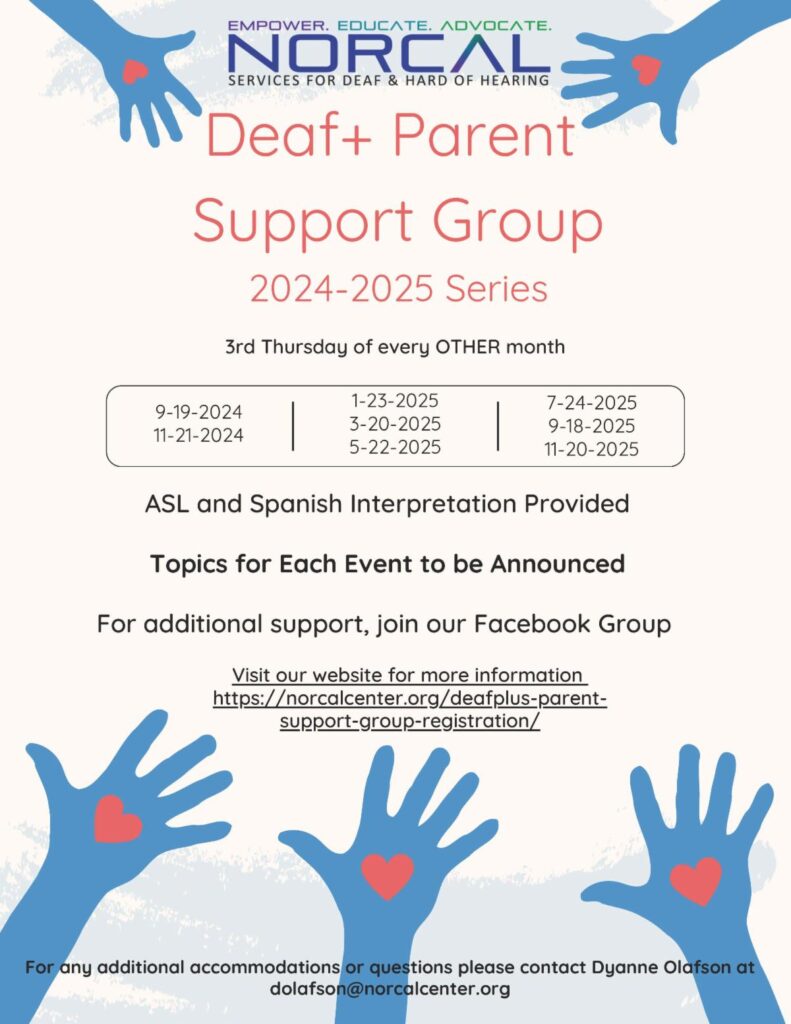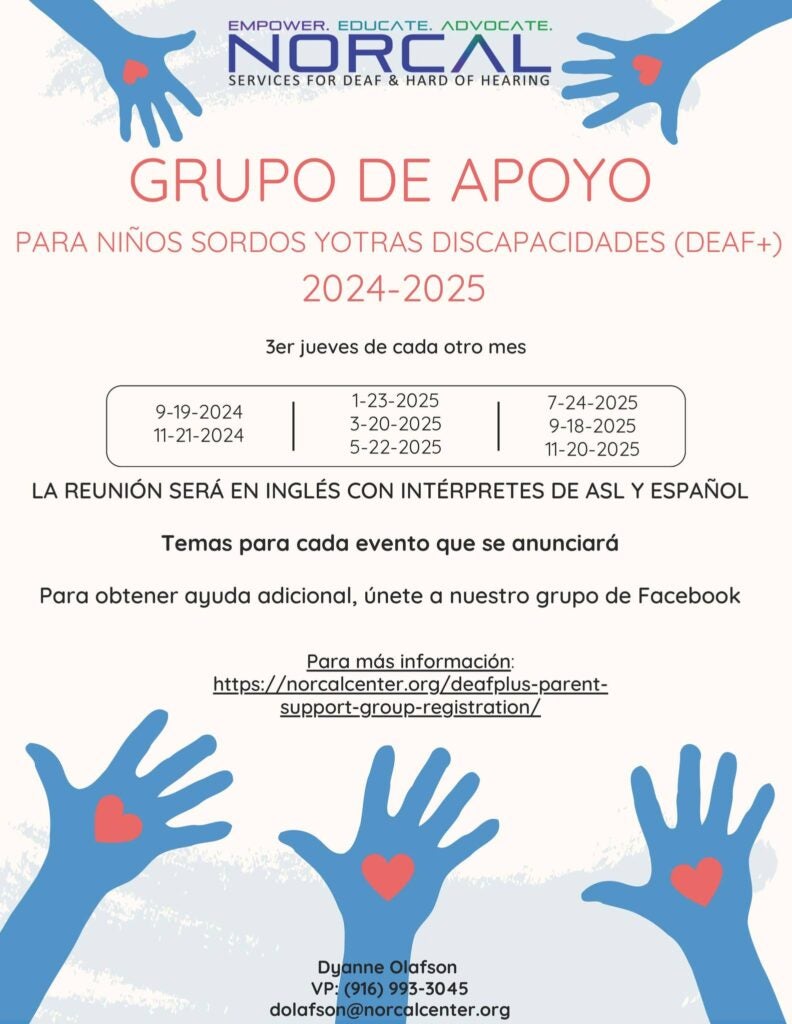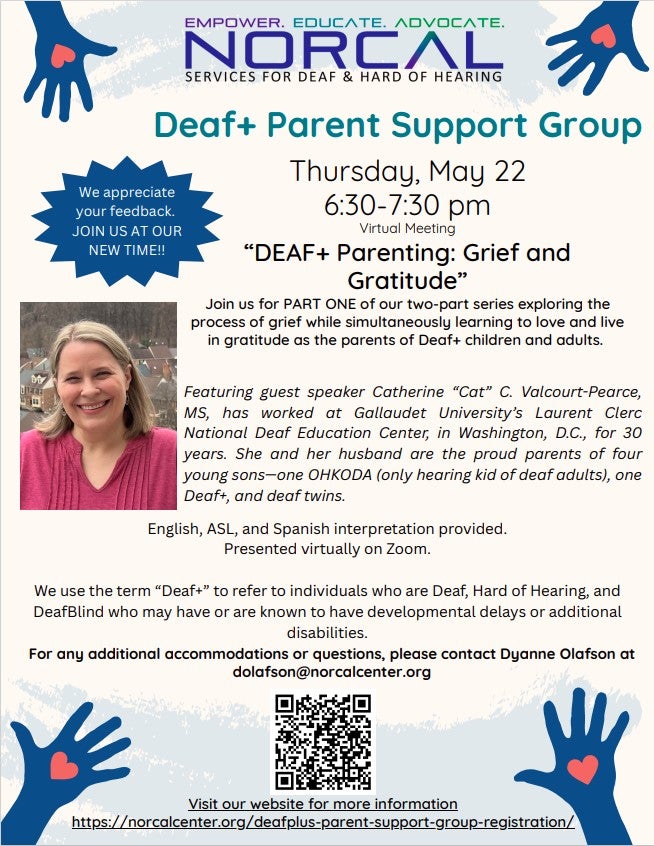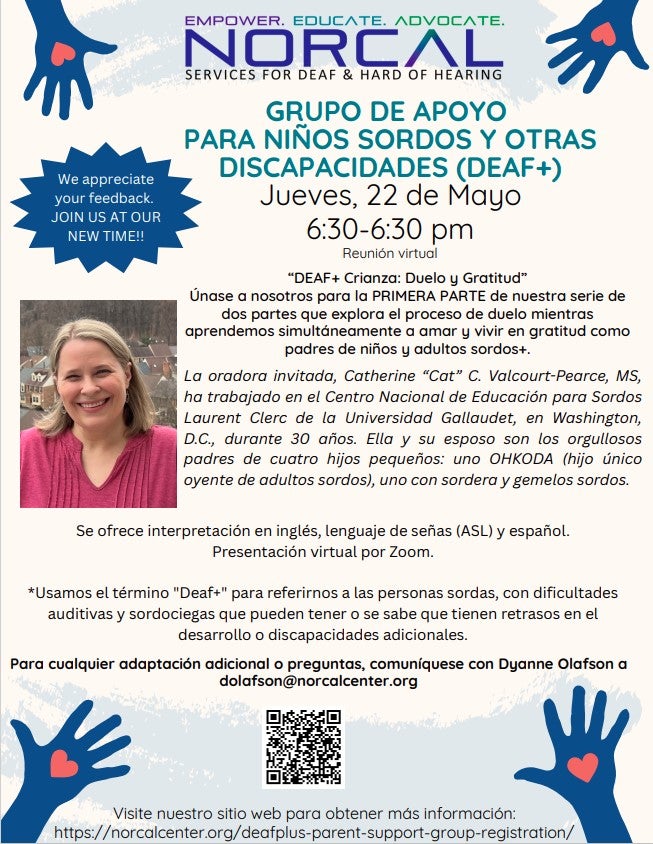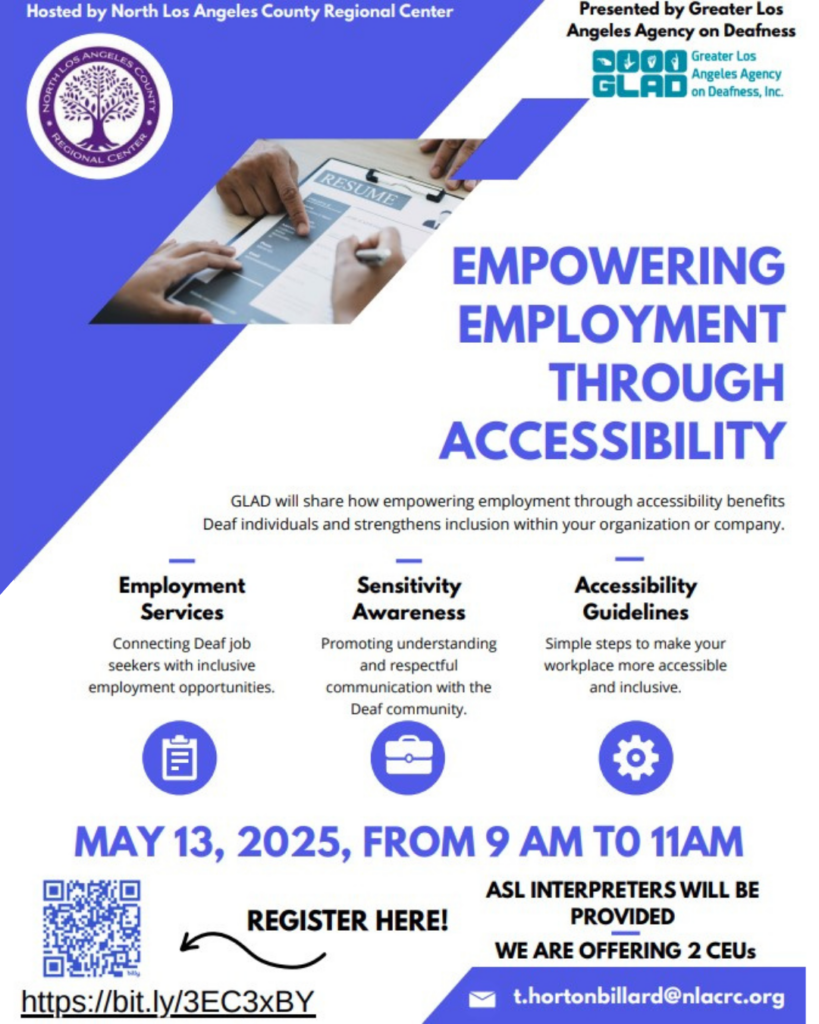ناشنوایان پلاس
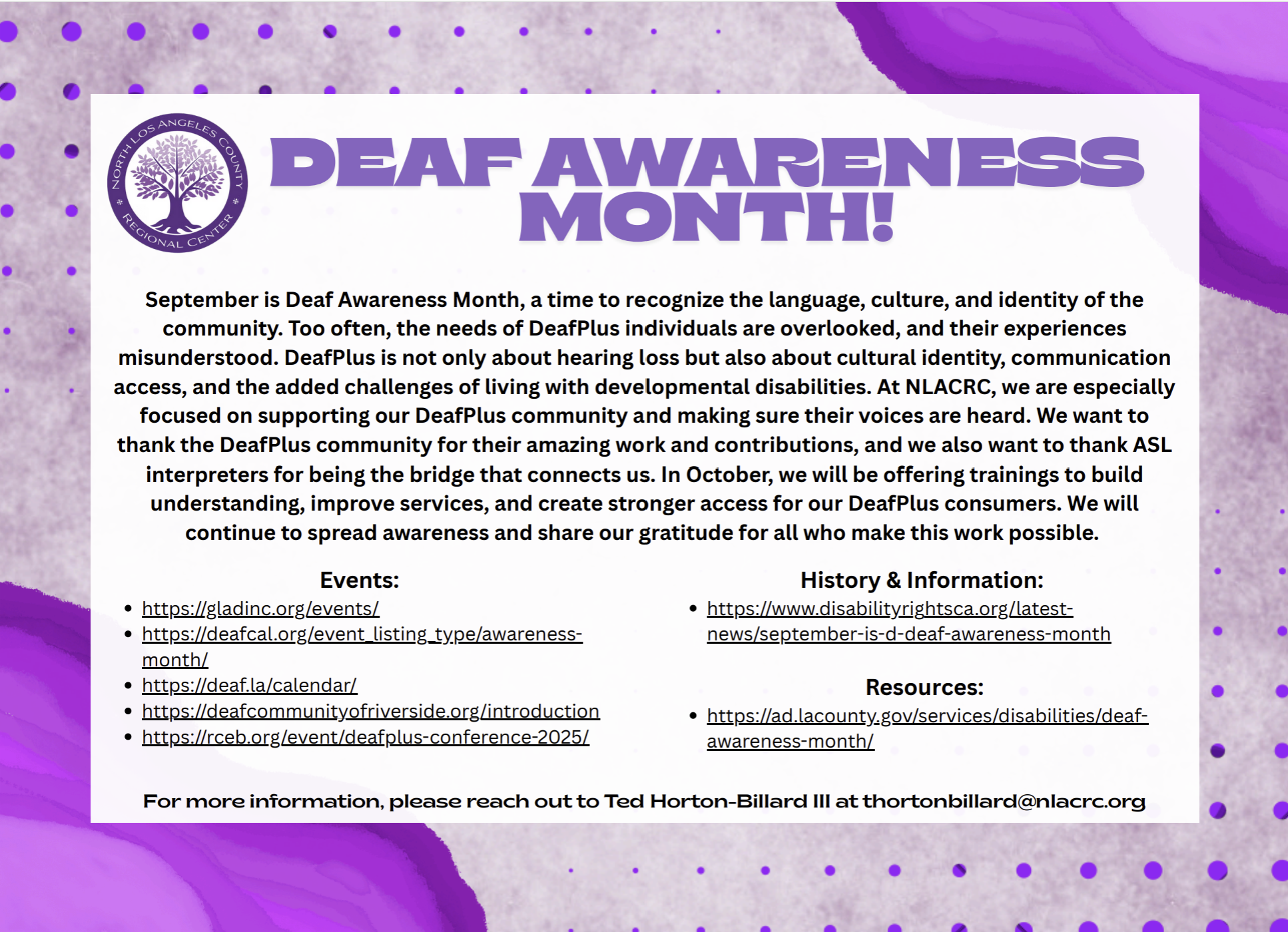
Download the flyer here: DEAF AWARENESS MONTH
ناشنوایان 101
What is DeafPlus?
DeafPlus refers to individuals who are Deaf or Hard of Hearing (DHH) and also have one or more additional disabilities. These disabilities can include intellectual disabilities, cerebral palsy, autism, epilepsy, or other medical and physical conditions that affect their daily life and communication. Because of these additional challenges, people who are DeafPlus may need specialized support beyond what is typically provided for those who are only Deaf or Hard of Hearing.
DeafPlus & the Lanterman Act
In California, the Lanterman Act ensures that individuals with developmental disabilities can receive services through Regional Centers. However, being only Deaf or Hard of Hearing does not qualify someone for these services. To be eligible, a person must have a developmental disability recognized under the Lanterman Act. If a Deaf or Hard of Hearing person also has one of these qualifying disabilities, they are considered DeafPlus and may be eligible for Regional Center services.
What is the Difference Between ASL and Deaf Interpreters?
ASL Interpreter (Hearing Interpreter)
An ASL Interpreter is a hearing person who is fluent in American Sign Language (ASL) and English. They interpret between spoken English and ASL for Deaf and hearing people to communicate. ASL Interpreters are trained professionals who work in many settings, such as schools, hospitals, and meetings.
Deaf Interpreter (DI)
A Deaf Interpreter (DI) is a Deaf or Hard of Hearing person who is specially trained to interpret. They work alongside an ASL Interpreter to help make communication clearer for Deaf individuals who:
· Use a different sign language or home signs.
· Have limited exposure to ASL.
· Have additional disabilities that affect communication.
· Need a more visual or adapted way of signing.
How They Work Together
In some situations, a team of interpreters is needed. The ASL Interpreter translates spoken English into ASL, and the Deaf Interpreter then adapts it to match the Deaf person’s specific language needs. This ensures the message is clear and accessible.
درک ناشنوایان و کم شنوایان (DHH)
فرهنگ ناشنوایان چیست؟
فرهنگ ناشنوایان شامل باورهای اجتماعی، رفتارها، بیان هنری، سنتهای ادبی، تاریخ، ارزشها و نهادهای مشترک جوامعی است که از ناشنوایی شکل گرفتهاند، جایی که زبان اشاره بهعنوان شکل اولیه ارتباط عمل میکند.
DHH:
ناشنوایان: این اصطلاح به افرادی اطلاق می شود که شنوایی کمی دارند و اغلب از زبان اشاره به عنوان ابزار اصلی ارتباط خود استفاده می کنند. بسیاری از جامعه ناشنوایان ناشنوایی خود را نه به عنوان یک معلولیت، بلکه به عنوان یک هویت فرهنگی منحصر به فرد می بینند. افراد ناشنوا اغلب زبان متمایز خود را دارند (به عنوان مثال، زبان اشاره آمریکایی) و شیوه های اجتماعی.
مشکل شنوایی: این اصطلاح افرادی را توصیف می کند که درجات مختلفی از کم شنوایی دارند اما ممکن است همچنان برای برقراری ارتباط به زبان گفتاری تکیه کنند. افرادی که کم شنوا هستند ممکن است از سمعک یا سایر فناوری های کمکی برای شنیدن و درک گفتار استفاده کنند. جامعه کم شنوا اغلب طیف وسیعی از توانایی های شنوایی و ترجیحات ارتباطی را در بر می گیرد.
هر دو "ناشنوا" و "ناشنوا" اصطلاحات چتری هستند که جامعه متنوعی از افراد را با تجارب، هویت ها و روش های ارتباطی متفاوت در بر می گیرند.
DeafPlus:
DeafPlus: در دستههای گستردهتر ناشنوایان و ناشنوایان، "DeafPlus" به افرادی اطلاق میشود که ناشنوا هستند و دارای معلولیتهای اضافی هستند. این اصطلاح برای درک نیازهای متنوع مصرف کنندگان در جامعه ناشنوایان مهم است. به طور خاص، افراد DeafPlus ممکن است دارای ناتوانی هایی باشند که طبق قانون Lanterman به رسمیت شناخته شده است، و آنها را واجد شرایط دریافت خدمات مرکز منطقه ای می کند.
توجه به این نکته مهم است که اگر مصرف کننده ناشنوا باشد اما طبق قانون لانترمن معلولیت نداشته باشد، واجد شرایط این خدمات خاص نخواهد بود. بنابراین، DeafPlus به عنوان یک نام مهم برای برجسته کردن افرادی در جامعه است که به دلیل چالشهای ترکیبی خود به حمایت بیشتری نیاز دارند.
یادگیری زبان اشاره آمریکایی (ASL):
یادگیری زبان اشاره آمریکایی (ASL) نیاز به زمان، صبر، تمرین و حس شوخ طبعی دارد. اگر والدین کودکی هستید که به تازگی شناسایی شده و ناشنوا یا کم شنوا است، می توانید از سیستم مداخله زودهنگام فرزندتان درخواست آموزش ASL کنید. سیستم های مداخله زودهنگام برای کمک به رشد کودک شما در همه زمینه ها و ارائه خدمات به خانواده ها طراحی شده اند تا آنها بتوانند از کودک خود حمایت کنند. اطلاعات بیشتر در زبان اشاره برای والدین موجود است.
یادگیری علائم فردی نسبتاً آسان است. مانند هر زبان گفتاری، ASL قوانین منحصر به فرد خود را در گرامر و نحو دارد. ممکن است یک سال یا بیشتر طول بکشد تا علائم کافی برای ارتباطات اولیه را یاد بگیرید و به راحتی آنها را امضا کنید. برخی از افراد علائم را آهسته تر از دیگران انتخاب می کنند، و اگر برای شما اینطور است، ناامید نشوید. هر کسی زبان اشاره را با سرعت خودش یاد می گیرد. صبور باشید و در یادگیری زبان موفق خواهید شد. پاداش به خوبی ارزش تلاش را خواهد داشت!
شما می توانید با شرکت در کلاس زبان اشاره که توسط سازمان ها، شرکت ها، کالج های اجتماعی یا دانشگاه ها ارائه می شود، یادگیری ASL را شروع کنید. همچنین می توانید با تمرین علائم خود با افرادی که ناشنوا یا کم شنوا هستند و همچنین ASL می دانند، دانش خود را در مورد ASL گسترش دهید. به طور کلی، افرادی که ASL را میدانند در مورد نشان دادن امضای امضاکنندگان جدید، روش صحیح امضا کردن چیزی صبور هستند و معمولاً سرعت امضای خود را کاهش میدهند تا شما نیز آنها را درک کنید. آنها همچنین اگر بار اول (یا حتی بار دوم) آنها را متوجه نشدید، مایل به تکرار کلمات یا جملات هستند.
ASL یک زبان بصری است. با علامت گذاری، مغز اطلاعات زبانی را از طریق چشم ها پردازش می کند و حالات چهره و حرکات بدن نقش مهمی در انتقال اطلاعات دارند. امضا کردن بدون استفاده از حالات صورت یا حرکات بدن امکان پذیر است، اما انجام این کار ممکن است پیامی متفاوت، گیج کننده یا سوء تفاهم داشته باشد. همچنین برای امضاکنندگان بومی عجیب یا غیرطبیعی به نظر می رسد.
زبان اشاره یک زبان جهانی نیست - هر کشوری زبان اشاره مخصوص به خود را دارد، و مناطق دارای گویش هایی هستند، مانند بسیاری از زبان های رایج در سراسر جهان. اگر قرار بود به ایالت دیگری سفر کنید و فرصتی برای امضای قرارداد با فردی که ASL می داند داشته باشید، ممکن است متوجه شوید که آنها از برخی علائم متفاوت از شما استفاده می کنند. این علائم به عنوان علائم "منطقه ای" شناخته می شوند و می توانید آنها را معادل "لهجه" در نظر بگیرید. این بدان معنا نیست که افراد در ایالت شما اشتباه امضا می کنند. این فقط یک تغییر عادی در ASL است و چنین علائم منطقه ای به درک شما از ASL طعم می بخشد.
وقتی علامت چیزی را نمیدانید، کلمه یا کلمات (به نام "انگشتنویسی") را املا کنید. وقتی متوجه شدید که هیچ علامتی برای یک کلمه وجود ندارد، نباید علامت جدیدی اختراع کنید یا بسازید. انجام این کار ممکن است قوانین دستوری ASL را نقض کند یا ممکن است ناخواسته توهین آمیز باشد.
سرعت در زبان اشاره مهم نیست. مهمتر است که به وضوح امضا کنید، حتی اگر مجبور باشید آن را با سرعت کمتری انجام دهید. هنگامی که مردم اغلب از شما می خواهند که خود را تکرار کنید، این یک علامت است که باید سرعت خود را کاهش دهید و سعی کنید تا حد امکان واضح امضا کنید. اگر به آرامی امضا می کنید، خجالت نکشید. مهم است که پیام خود را به گوش دیگران برسانید، با شخص دیگری ارتباط برقرار کنید و درک شوید. هیچ میانبری برای ارتباط موثر وجود ندارد.
از سفر یادگیری ASL لذت ببرید!
Learn ASL
سخنرانان اسپانیایی
زمین دست ها
سایر منابع ASL
شروع زودهنگام (برنامه مداخله زودهنگام) برای کودکان ناشنوا و زیر 3 سال:
آموزش ویژه برای دانش آموزان ناشنوا + (سنین 3 تا 21 سال):
سخنرانان اسپانیایی
برنامه های کتاب داستان VL2
زمین دست ها
سایر منابع ASL
LAUSD
 Low Vision/Blind Services | Early Childhood Special Education, Early Start Low Incidence
Low Vision/Blind Services | Early Childhood Special Education, Early Start Low Incidence
 Early Start Low Incidence/Deaf Education Services | Early Childhood Special Education
Early Start Low Incidence/Deaf Education Services | Early Childhood Special Education
 Deaf Education Services Pamphlet
Deaf Education Services Pamphlet
 Servicios de Educacion para Sordos
Servicios de Educacion para Sordos
 Low Vision/Blind Educational Services
Low Vision/Blind Educational Services
 Servicios de Educacion Para Sordos
Servicios de Educacion Para Sordos
شبکه پشتیبانی والدین
If you have a child who is DeafPlus or know someone who does, this is a great chance to learn about available resources and support. You are not alone—we are here to help you find the services and assistance you need!
خدمات وکالت
منابع بیشتر
Deaf+ Events
No events found.

